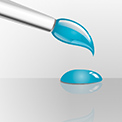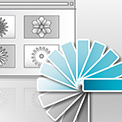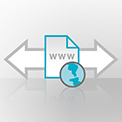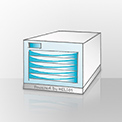PDF Preflight
PDF Preflight now utilizes callas pdfToolbox 5 which is licensed for PDF HandShake. pdfToolbox, the successor to pdfInspektor, is now Acrobat X compatible and supports the generation of HTML reports, which can be enabled in the HELIOS included scripts.
Important: Due to the change from pdfInspektor to pdfToolbox, all existing scripts in the “Settings” volume (in the Script Server, ToolServer or WebShare/Actions folders) must be updated!
pdfToolbox 5 support has been added for:
- The printer queue notification script “inspectPDF”
- The Script Server hot folder script “inspectPDF.pl”
- The WebShare PDF preflight action script “wscheckPDF.pl”
WebShare scripts
The “wsdownload.pl” script has changed in terms of the number and the order of the parameters:
wsdownload.pl zipstream-options offset srcdir files...
Customized scripts in the “HELIOSDIR/var/webshare” directory need to be adapted after migration to the HELIOS UB2 product generation.
Obsolete “._” files
HELIOS EtherShare UB2 supports extended attributes. Older file servers may contain many “._” files on their volumes, created by modern Mac OS X clients due to the missing attribute support. These files are now obsolete with UB2.
To check the volume for “._” files, login as root, change to the UNIX directory where the volume is located and issue the following command line (using “sh”):
find . -name "._*" | grep -v .rsrc | ( while read x; do /usr/local/helios/bin/dt ls "$x"; done )
To remove the “._” files, login as root, change to the UNIX directory where the volume is located and issue the following command line (using “sh”):
find . -name "._*" | grep -v .rsrc | ( while read x; do /usr/local/helios/bin/dt rm "$x"; done )
PDC authentication
The new PDC authentication requires the HELIOS PDC Logon service to be installed on the Windows host that should act as the PDC to the HELIOS installation. This host does not have to be a Primary or Backup Domain Controller; any Windows host that is part of the desired domain will do.
HELIOS PDC Logon is installed by running “WindowsAuthServer ToolsHELIOS PDC Logonsetup.exe” in the “HELIOS_APPS” volume.
The new PDC authentication is active by default. The following steps are necessary for a successful migration:
- Install the UB2 software
- On the Windows hosts install the “HELIOS PDC Logon” service
- On the Windows hosts optionally remove the network share including contents created by the previous HELIOS PDC configuration. By default this share resides at “C:Windowsheliosauth”. This share is not used by the new PDC authentication
- If PDC user or group names are already listed in the “HELIOSDIR/var/conf/authsrv.cache” cache file from a previous UB+ installation, the new “authsrv” will keep these mappings to UNIX user and group IDs. Thus, the consistency of ID mappings is kept also for old users and groups
PDC related “authsrv” preference keys
PDCCompat
Off by default. Setting this preference to TRUE activates the old UB+ PDC authentication mechanism by using the “heliosauth” share.
Switch preference on:
# cd /usr/local/helios
# bin/prefvalue -k "Programs/authsrv/PDCCompat" -t bool TRUE
PDCCompatIDMap
On by default. If set, the new PDC authentication looks at “HELIOSDIR/var/conf/authsrv.cache” to map PDC user and group names to UNIX user and group IDs of previous HELIOS installations. If this file does not exist or this preference is switched off, all PDC users and groups get a PDC domain specific and unique UNIX ID. This new ID will be different to the ID set in the “authsrv.cache” file.
Switch preference off:
# cd/usr/local/helios
# bin/prefvalue -k "Programs/authsrv/PDCCompatIDMap" -t bool FALSE
Migrating HELIOS UB64 to G8
Migrating HELIOS UB2 to UB64
Migrating HELIOS UB+ CD023 to CD024
Migrating HELIOS UB to UB+
Migrating HELIOS 4th generation to UB

 Enterprise Server
Enterprise Server
 Développeurs / SDK
Développeurs / SDK
 Industrie / Commerce
Industrie / Commerce
 Editeurs de journaux / Maisons d'édition
Editeurs de journaux / Maisons d'édition
 Photographes / Studios
Photographes / Studios
 Agences de communication / publicité
Agences de communication / publicité
 Vidéo & Divertissement
Vidéo & Divertissement
 Collaboration depuis le cloud
Collaboration depuis le cloud
 Couleur HD
Couleur HD
 Traitements d'images
Traitements d'images
 L'épreuvage
L'épreuvage
 Connectivité WebShare
Connectivité WebShare
 Automatisation de flux
Automatisation de flux
 Serveur de fichiers pour l'entreprise
Serveur de fichiers pour l'entreprise
 Communiqués de Presse
Communiqués de Presse Vidéos
Vidéos  Bulletins
Bulletins  Événements
Événements